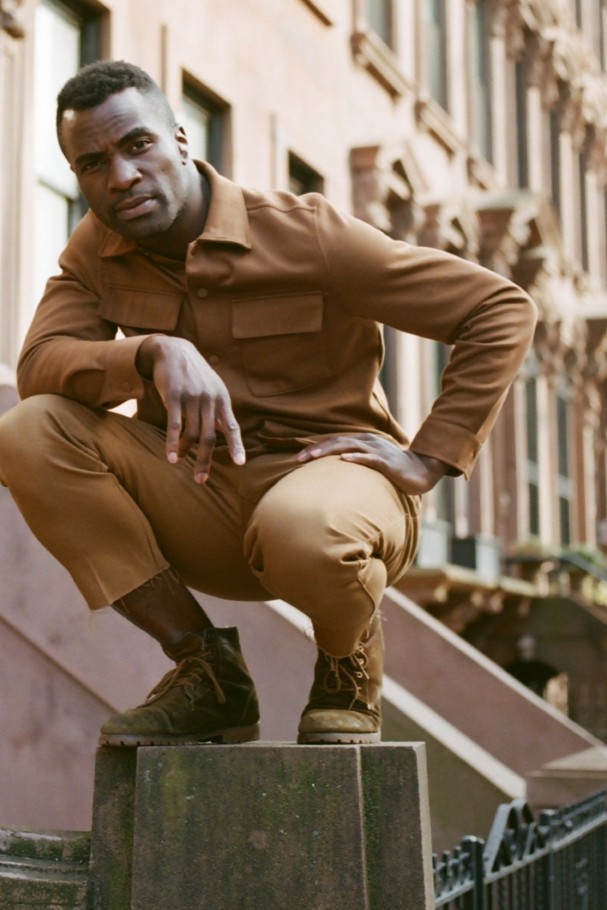
“/ləv/” & The Term Love on Film.
Words: Q&A Sista Nancy + Kevin Adams
Art: Kevin Adams
We sat with type designer Kevin Adams to get some insight of the design industry, specifically the type design industry and how he uses type design to contribute to shifting the narrative.
When were you introduced to type design?
I knew at a very young age I wanted to have a career in the arts. My first experiences with type design were at age ten. I would draw the logos of my favorite cartoons, video games, and sport teams on a piece of paper. At one point, classmates would even pay me to draw their favorites for them. However, it wasn’t until about five years ago that I truly started to study typography and lettering as artforms.
Did you realize its power immediately or later?
Subconsciously, I think I was aware of the power of type design from a very young age. Decisions about what brand of soda to drink, video game to purchase, and action figures to buy were all affected by the power of type design. Despite its influence on everyone, its power quite often goes unnoticed. When I started lettering, the art of drawing letters, I really started to understand the power of the letter form and trying to manipulate this power. A letterform can be playful, serious, classic, or fresh. I try to pull from a wide range of influences in how I draw and illustrate these letterforms to create a mood.
How important is art right now in how the world is shifting?
I think brands and corporations are being challenged to be more authentic in how they present themselves to their customers. Part of this authenticity will be communicated through a visual means. Consumers are even beginning to demand that whoever is creating this art be congruent with the entities’ values. Simply put, if you say “Black Lives Matter” have some Black employees, and treat those Black employees with decency and humanity. With your philanthropic work, support causes that will uplift Black people and not tear them down. I think these same questions will be asked of museums, galleries, and advertising agencies.
With so many people talking right now, how do you use typography and lettering to speak clearer or louder?
In the wake of a global pandemic and civil unrest, this has been evolving for me. There are days I’m in mourning. There are days I’m mentally and emotionally exhausted. I have tried to make sure my work is impactful and not just an act of creative labor. During the peak of COVID-19, I wanted to make something that spoke about the Black and Brown faces that were frontline and essential workers. This work never felt right, so I never shared it. When I do decide to talk through my work, now I try to avoid reworking the same handful of quotes from Black thinkers on social change. I seek inspiration in African American music. African American music has helped to uplift our souls, express our pain, and give social commentary. The impact of our music and its importance to the Black experience, to the cultural heritage of all Americans cannot be escaped, regardless of race or origin. These lyrics I letterer typeset all have personal significance to me and are timely in their message. Even some of my older works have taken on new meaning during these times.
Word Play
In addition to reconsidering my own work, I started to advocate that Black artists should be able to tell their own stories. On Blackout Tuesday, I started to reflect about my place during this movement toward change. During the day, I became aware of the “Amplifying Melanated Voices Challenge.” It urged social media to give the needed and overdue lift to Black and Brown voices. For the creative community, this would suggest for allies to go silent on social media from June 1-7, and share only creative content of Black and Brown artists to reflect on recent events. Some community accounts and artists we approached were very quick to respond, and very happy to serve as they understood the importance. Some of them without prompting have continued to support past the end of this Instagram challenge. Others greeted us with indifference, arrogance, and ignorance.
Real Allies vs. The Black Box
In my small sphere of influence within the lettering community, this farce was exemplified by a few community lettering accounts that posted the black square in association with Blackout Tuesday. By choosing to post a black square, it is incumbent upon them to do the work associated with being an ally. We want more than virtue signaling and hollow support; we are asking for serious and overdue reforms to the status quo. Our demands of these accounts are not for sentimentality, but the sensitivity to hear us out, and courage to do what’s right. They cannot claim to support the Black Lives Matter agenda but work tirelessly to mute, stifle, and talk over those very same voices. After a few days of public outcry, these accounts in very performative gestures quickly shared a few images created by Black artists. Once the “Amplifying Melanated Voices Challenge” formally concluded on June 7, these accounts reverted to content created by their pre-established relationships. As a collective of Black artists, we learned a lot through these experiences. We better understand the challenges ahead and conditions we want to correct. There is a new desire to connect and ensure our voices are not misused and abused by those who do not truly support us as a people.






